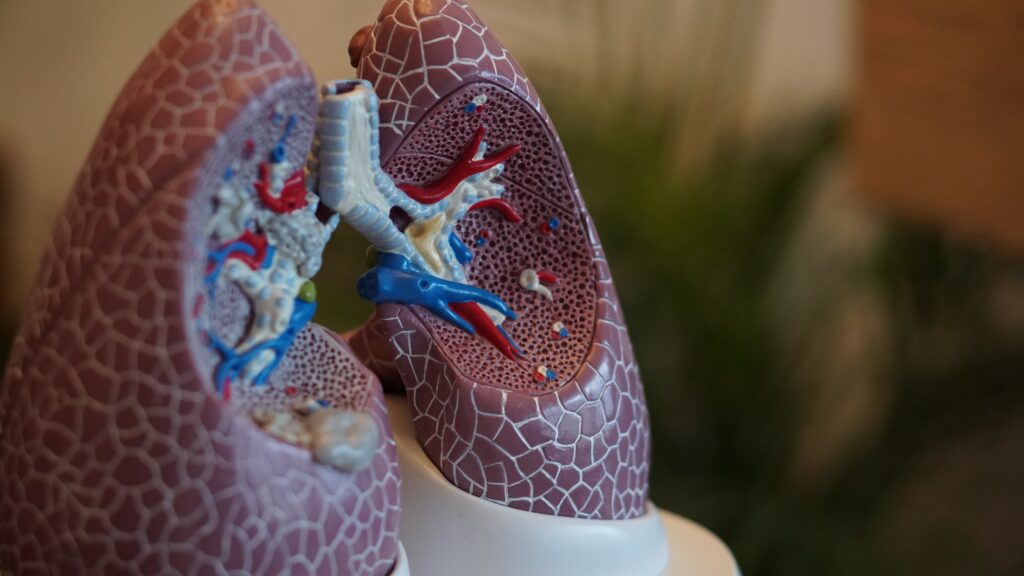Breathing is something we do all day and night without even realizing it. In fact, we breathe in and out about 17,000 times a day.[*] Despite being such an inherent part of our existence, many people don’t understand the breathing process or even know why breathing is so essential to life.
In this article, we’ll be taking a deep dive into breathing, exploring how it works and why it’s important, as well as different types of breathing and tips for healthy breathing.
Let’s all take a deep breath—in and out—and get started.
For anyone looking to improve their sleep, Somnox 2 is your science-backed sleep companion that guides you towards slow-paced breathing that helps you fall asleep faster, worry less and wake up rested. 70% of our users improved their sleep quality within 4 weeks. Interested?
Table of Contents
How the Respiratory System Works
The respiratory system is the network of organs and tissues that allow you to breathe. The two lungs, which sit to the left and right of the heart, are the primary organs of the respiratory system.[*]
The breathing process (aka respiration) has two major phases: inhalation and exhalation. The inhalation process starts when the diaphragm, the muscle located under your lungs, contracts and moves downward. This increases space in your chest cavity, which allows your lungs to expand.
As your lungs inflate, air enters your nose or mouth and travels down your windpipe to your bronchial tubes, which connect your windpipe to your lungs. As the air reaches your lungs, it enters air sacs called alveoli, which pass the oxygen into your bloodstream.
When you exhale, your diaphragm relaxes and shifts up into your chest cavity. As the space in your chest cavity decreases, carbon dioxide-rich air is pushed out of your lungs and windpipe, and then out of your nose or mouth.

How Your Body Controls Breathing
Inhalation is an active process, meaning muscles are involved. Most of the work of inhalation is done by the diaphragm, the main breathing muscle, and to a lesser extent, the intercostal muscles.
Exhalation, on the other hand, is a passive process, meaning no muscle activity is involved. Exhalation is caused by the natural elastic recoil of the lung tissue and is accompanied by the relaxation of all breathing muscles—similar to a balloon deflating.
While you can consciously inhale and exhale at will, breathing is largely an unconscious process that’s controlled by your brain stem.[*] The brainstem connects the brain to the spinal cord and regulates many automatic bodily processes, including heart rate, blood pressure, reflexes, and breathing.
Your brainstem controls your breathing rate by sensing your body’s need for oxygen, as well as its need to get rid of carbon dioxide, which is a byproduct of cellular respiration.
The Importance of Breathing
Just like food and water, breathing is essential for life. However, while you can go days without water and possibly weeks without food, you can only go a few minutes without breathing.
Why is that? What purpose does breathing serve? The critical nature of breathing is directly linked to the importance of one particular element your body needs every second of every day: oxygen.
Air contains 21 percent oxygen, which you breathe into your lungs.[*] Once inhaled, your lungs pass the oxygen toyour bloodstream, where it’s carried off to your tissues and organs. The cells that make up your tissues and organs then use the oxygen to perform functions that keep you alive.
Breathing also serves as a way to expel carbon dioxide gas, which is a byproduct of cellular respiration.

How Intentional Breathing Can Support Your Body
While breathing is a largely automatic process, you can consciously influence your breathing rate whenever and wherever you’d like.
Intentionally altering your breathing rate allows you to indirectly influence your autonomic nervous system. This is really exciting if you think about it! Consciously slowing your breathing increases the activity of the parasympathetic nervous system (aka “rest and digest”) while reducing the activity of the sympathetic nervous system (aka “fight or flight”).
The parasympathetic nervous system is responsible for the relaxation response and triggers beneficial changes in the body, including a slowed heart rate and reduced blood pressure. When this system is activated, your autonomic nervous system is balanced, which relieves you of anxiety, overwhelm, and restlessness.
In this way, you can use your breath as a tool to calm your body and mind. Research suggests that deep breathing practices can, among other things, soothe anxiety and support restful sleep.[*][*]
To think about it another way, taking deep, diaphragmatic breaths communicates to your brain, “Everything is okay. It’s safe to relax,” in a language it understands.
While diaphragmatic breathing doesn’t require anything but your breath, you can further support your breathing practice with the Somnox 2 Breathe & Sleep Robot, which uses the power of breathing to calm the mind and prepare you for a good night’s sleep.
By simply holding the Somnox 2, you can physically feel a calm breathing rhythm. This will (unconsciously) encourage you to adopt the same soothing rhythm.
Tips for Healthy Breathing
There are several other things you can do to support healthy breathing and, consequently, a healthier you:
- Quit smoking (or don’t start if you don’t smoke). As the number one risk factor of lung cancer and other lung diseases, taking steps to quit smoking is essential.[*] Also, try your best to avoid secondhand smoke.
- Keep active. Regular aerobic exercise strengthens the lungs and keeps them healthy. Aim to get 150 minutes of aerobic exercise per week.
- Maintain a healthy weight: Being overweight increases a person’s risk of breathing difficulties.[*] In addition to exercising, maintain a nutritious diet to support a healthy weight.
- Limit exposure to air pollution. Indoor and outdoor air can contain particles and pollutants that damage your lungs. To keep your lungs healthy, maintain a clean home and stay inside on days when the outdoor air is unhealthy. You can check the outdoor air quality where you live by visiting airnow.gov.
- Practice diaphragmatic breathing exercises. Diaphragmatic breathing exercises will not only help reduce your stress, but can also help strengthen your lungs and diaphragm and make them more efficient.[*]
Breathe Better to Live Better
Breathing is a truly incredible process that we depend on for life. It brings oxygen into our bodies, expels carbon dioxide, and can even be harnessed to relieve stress, anxiety, and sleeplessness.
Breathing isn’t something we often consciously think about, but hopefully after reading this article, you have a greater appreciation for your respiratory system and a better understanding of the superpower that’s available within all of us.
For anyone looking to improve their sleep, Somnox 2 is your science-backed sleep companion that guides you towards slow-paced breathing that helps you fall asleep faster, worry less and wake up rested. 70% of our users improved their sleep quality within 4 weeks.


